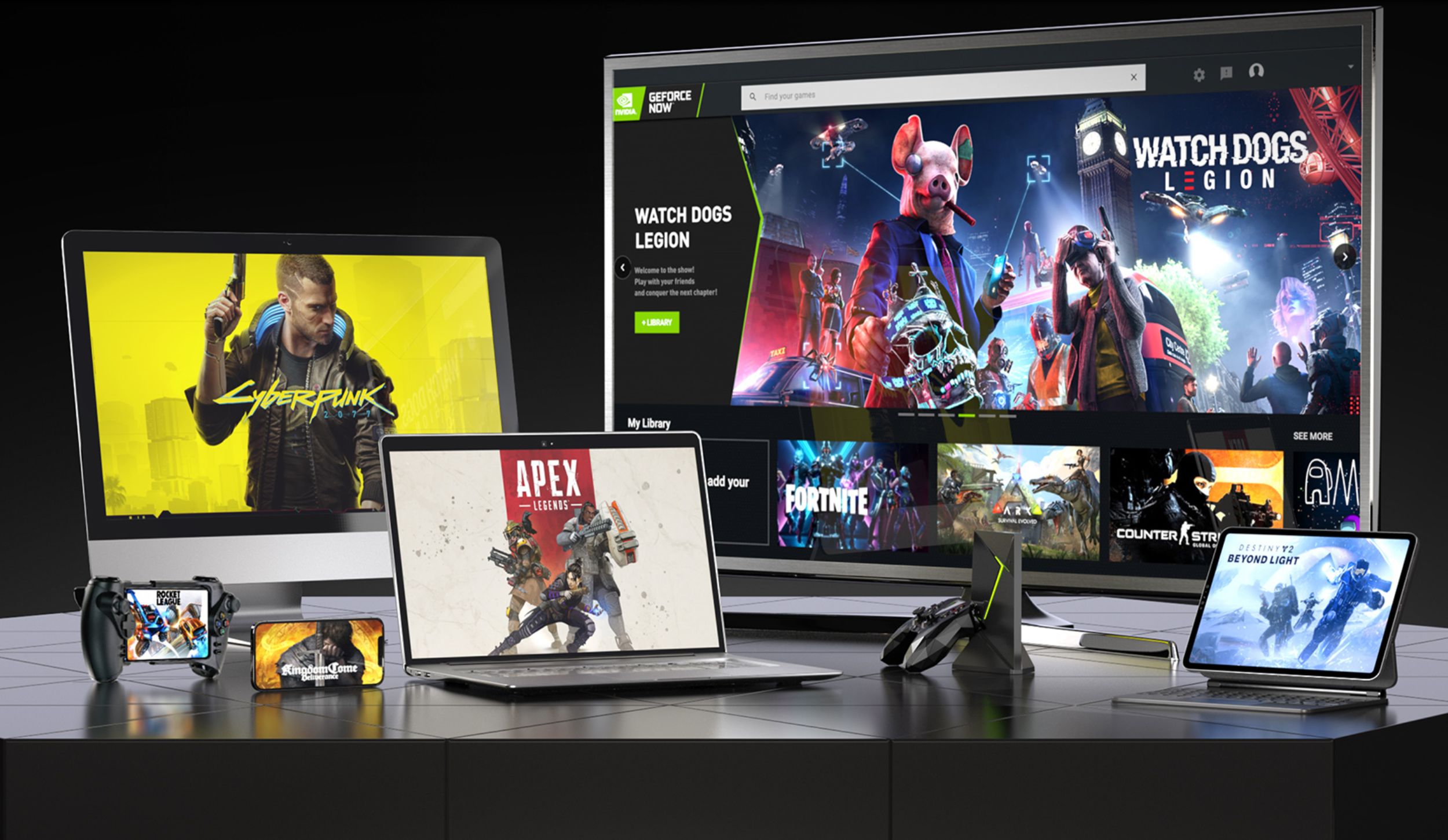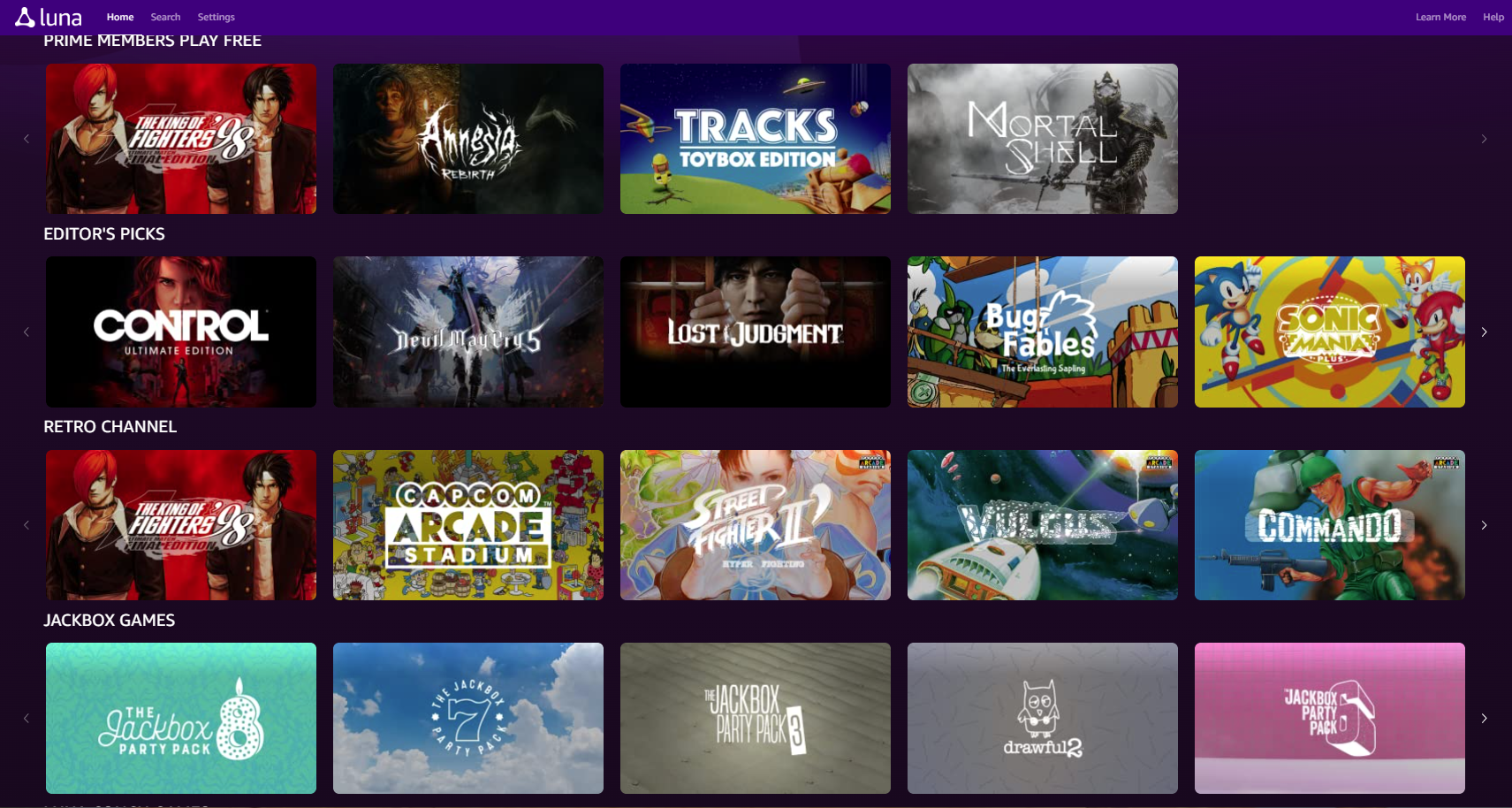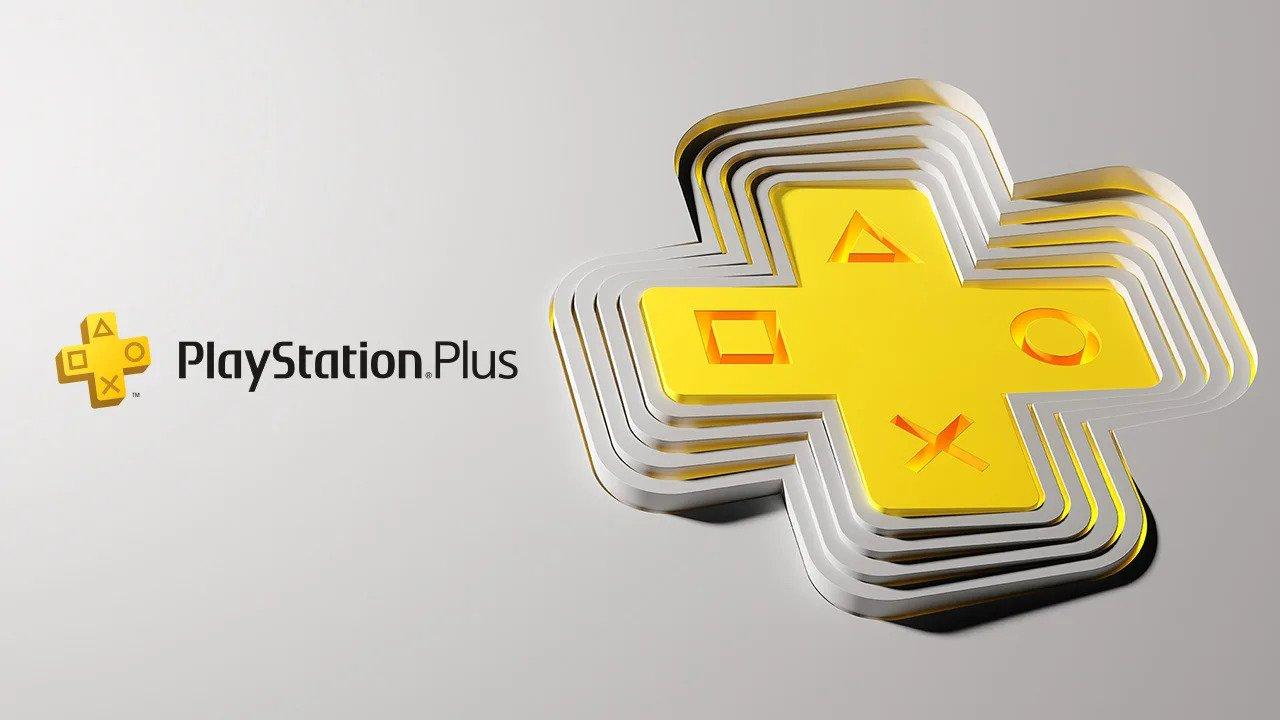Best cloud gaming services 2023: Reviewed and ranked


Want to play the latest AAA games, but don’t have the high-end computer to enjoy them on? Then you should seriously consider getting a subscription to a cloud gaming service. With cloud gaming, even if you have only a modest computer setup you can still enjoy playing the latest-release games. With companies such as Nvidia, Microsoft, Sony, and others having entered the the cloud gaming arena, it’s now easier than ever. Cloud gaming has improved by leaps and bounds in recent years and the prospect of gaming anywhere on any system devoid of the hassles of updates and patches makes for a really appealing service.
With so many great games and features to choose from though, it’s hard to know which is the best subscription service to pick for your own needs. At PCWorld, we’ve reviewed all of the top cloud gaming services and figured out what works, what doesn’t, what to expect from each, and why you may want to choose one service over another. From the game libraries to the user experience to the visual quality, each has its own benefits and drawbacks. Below you’ll find a curated list of our favorite cloud gaming platforms with info on what each brings to the table and which one might be best for you.
Also, be sure to read our section below on what to look for when shopping for a cloud gaming service.
Updated 06/22/2023: Check out our latest review of the Lenovo IdeaPad 5 Gaming Chromebook — this Chromebook was designed with cloud gaming in mind, giving consumers a low-cost device that can provide a satisfying gaming experience. It’s a good option for kids, students, or anyone who does most of their computing in the cloud.
1. GeForce Now – Best cloud gaming service overall

Pros
Very smooth and responsive experience The Free plan
Cons
Games are not included Limited time on gaming sessions Inconsistency in compatibility of games and platforms Price When Reviewed:Free tier I Priority tier ($9.99/mo or $49.99/6 mo) I Ultimate tier ($19.99/mo or $99.99/6 mo)Best Prices Today:9.99 at Nvidia
When it comes to the best all-around experience, GeForce Now is our strongest recommendation. While you do have to purchase many of the games that you can play on this service, the fact is that GeForce Now brings some of the best visual quality, a massive game compatibility list, and a free membership plan option. With those aspects in mind, there’s almost no reason not to jump in and at least try out some free games like Destiny 2 or Fortnite to see if it works for you.
Additionally, if you do end up wanting to purchase some games to play with GeForce Now, you are not tied to the service long term. The games you’re playing in GeForce Now are accessed through your own Steam, Epic Games Store, or other distribution service that you’ll be able to load up locally on your own computer if/when you get your own gaming PC. So if you’re just getting started in PC gaming, or simply want to check out cloud gaming in general, we’d recommend starting here at the very low cost of free.
Read our full GeForce Now review
2. Xbox Cloud Gaming – Best value

Pros
Impressive game library all included with subscription “Out of the box” functionality
Cons
Video compression makes a big impact on visual quality Not all games are staying in the game library Price When Reviewed:14.99Best Prices Today:$14.99 at Microsoft
There may be contention over which major gaming brands make the best hardware—but for most folks, it really just comes down to the games themselves to determine where you’re going to play them. Xbox Cloud Gaming, a component of the Xbox Game Pass Ultimate, grants access to the entire Xbox Game Pass game library, and that library is both impressive and ever-changing.
For $14.99/month, Xbox Game Pass Ultimate offers access to over 350 games, from Skyrim to Deep Rock Galactic to Boyfriend Dungeon to Battlefield V and plenty more. While the cloud gaming experience can have some notable amounts of compression artifacts from time to time, it still means playing some of the best games available without too much of an investment.
Read our full Xbox Cloud Gaming review
3. Amazon Luna – Best casual experience

Pros
Very intuitive interface Some games playable with friends that aren’t subscribed to Luna Incredible deal to access very specific games
Cons
Game library is a few years behind Multiple channels with different costs can add up quickly Price When Reviewed:Various subcriptions from $4.99/mo to $17.99/moBest Prices Today:9.99 at Amazon
Amazon Luna is an extension of Amazon’s efforts in the gaming industry and it brings a fantastic and smooth user experience with a niche selection of games at a reasonable price. Amazon Luna splits its available games up into various channels, which can be paid for separately, making it both one of the cheapest and one of the most expensive subscription models in this list, depending on what you’re going for.
Notably, Amazon Luna offers a strong roster of retro and family-friendly games, if you’re looking to either dive into some nostalgia or enjoy some gaming with your family without having to buy and connect old and new game systems. Additionally, with a free rotation of games for Prime members and an incredible deal on playing Jackbox Games, it can make for a great party pick for you and your friends both locally and online.
Read our full Amazon Luna review
4. Playstation Plus – Up and comer

Pros
Visual quality can be spectacular Some really great games in the included library
Cons
The user experience and app interface needs a complete overhaul Questionable connection stability and a lack of troubleshooting tools to address it Price When Reviewed:17.99Best Prices Today:$17.99 at Sony
PlayStation Plus on PC is Sony’s follow-up to its now shuttered PlayStation Now service, and while their heart seems to be there, it still has some catching up to do. Largely, you can access quite a few games, including many PlayStation exclusives from the original PlayStation through PlayStation 4, but we did run into a few issues.
Similar to Xbox Cloud Gaming, PlayStation Plus on PC is a component of a larger service, PlayStation Plus Premium, but unlike Xbox Cloud Gaming, PlayStation Plus on PC needs a lot of help when it comes to what makes a solid PC service and application, from the user interface to connection stability. If you are a PlayStation Plus Premium member already, though, then do check the PC app out.
Read our full Playstation Plus review
What to look for in a cloud gaming service
There are three major aspects to consider when it comes to a cloud gaming service: technical requirements, game library, and your own plans for the future.
Technical requirements
When it comes to technical requirements, it’s mostly about having a fast and stable internet connection. The bare minimum seems to be about 10Mbps for some of these services, but 20Mbps or higher should be good to get started on any of them. They all recommend using wired internet connections, or they may have specific recommendations for what your Wi-Fi network at home needs. Additionally, if your internet service has data consumption caps, then be aware that these kinds of services will use a ton of that data, similar to streaming high-quality video.
Other technical requirements, such as processing power, RAM, and monitor quality are all going to vary by your needs. But generally speaking, if your device can handle a high-quality Netflix or Hulu stream, it should be able to handle cloud gaming streams. If you’re looking to get into the 4K experiences with GeForce Now or Google Stadia, then you will need a monitor to support that, too. Additionally, both Xbox Cloud Gaming and PlayStation Plus on PC do require a game controller to play games on their services—though that does not necessarily have to be their branded controllers, so long as it has enough buttons.
Game library
When it comes down to it, the games are what you’re here for. Every service has its own included or compatible game library, and you can look those up ahead of time. If you’re looking for specific games, then definitely look to see which services, if any, offer them. Otherwise, if you’re looking to keep up with the latest releases, then do note which services are getting those new releases activated ASAP. None of them seem to fully keep pace with modern release schedules, but both Xbox and Google seem to be trying their hardest to get there, with GeForce Now following close behind.
Cloud gaming goals
Lastly, think about what you want out of your cloud gaming experience. Are you just looking to have some games to play when you’re traveling or staying with family for an extended period? Are you just getting into gaming and want a more affordable option to see if you’d stick with it before buying into expensive hardware? Maybe you’re just looking to be able to play some specific games with a group of friends? Each of the major cloud gaming services seems to have a different approach to their offerings, making it possible to shop around for the right fit.
How we test cloud gaming services
We dove deep into all of these services to get the best feel for what they’re offering, including getting technical specifications when possible, testing each service in identical locations for comparisons, and trying to get the more subjective perspective of whether it feels good to play.
Our main test location was in Texas, U.S. on a home Spectrum internet connection with a minimum 400Mbps down and 25Mbps up, and a maximum of about +10 percent for both speeds. Latencies were tested against major server locations for each gaming session to ensure there weren’t any unexpected problems getting in the way there. GeForce Now was the only service that included its own speed testing and troubleshooting tools, so we confirmed that conditions were good there, and then recorded the other speed and latency stats to recreate that connectivity as best we could with the other cloud gaming services for as much consistency as possible.
All of our testing was done on a custom gaming PC with a Ryzen 7 1700X CPU, 32GB of Corsair DDR4-3600 RAM, an EVGA GeForce RTX 3070 8GB XC3 Ultra GPU, and both a 1080p and a 4K monitor. For controls, we used the same Razer Basilisk v2 mouse and Corsair K70 RGB Pro keyboard when relevant, as well as both an Xbox One and a PlayStation 4 controller connected to the PC with USB cables. All tests were done on the Windows 10 Pro 64-bit OS.
Some, but not all, services offer both a web browser interface and a standalone Windows application to browse and launch games. All of our tests were done with both when relevant, and our full reviews reference which seemed to provide the better experience in both browsing and playing. For the web browser access, we tested with both Firefox and Google Chrome with little difference between the two except for Stadia, which calls for Chrome.
When it came to game performance, we were not able to capture accurate frames-per-second or benchmarking data for every service, so data for those comparisons were not directly measured. This largely has to do with the obfuscation of information, and that most of the cloud gaming services are running console versions of the games on their platform, meaning much of the PC testing options simply aren’t available for in-game testing. Even if we could, our performance stats wouldn’t necessarily match anyone else’s since those results would be tied more closely to internet speeds and latency issues, which can depend simply on how far your PC is from a service’s data center.
The feeling of gameplay came down to a handful of tests. Some games are available on multiple services, so we would be sure to play the same game across multiple services to see if things like responsiveness felt the same between them. Additionally, we would specifically pick out games that required what people consider “tight” or quick response controls to play successfully, including various platformers, fighting games, and action RPGs. Additionally, we would compare the cloud gaming experience to just playing the same game locally on the test rig to see if anything did feel notably off. The results are subjective and are likely to be more noticeable for more experienced players, especially in the competitive gaming space.
FAQ
1.
How does cloud gaming work?
Think of it as something between playing an online game and watching Netflix. You are connecting to a server somewhere on the internet, and that server has the hardware that your account and game is running on. The video feed of that game is then being streamed back to your device, where you send controls back through your connected controller or mouse & keyboard. In this setup, it’s important to have both a stable, high-speed internet connection and low latency to the cloud gaming service. GeForce Now explicitly references the importance of latency in its service, and we agree. Poor latency will mean longer delays between what you do on your controller and what you see on screen, and in many games, that’s just a bad time.
Author: Kevin Casper
Recent stories by Kevin Casper:
GeForce Now review: You bring the games, Nvidia streams the hardwarePlayStation Plus on PC review: Not exactly a premium serviceXbox Cloud Gaming review: It’s all about the games








